HOn30 Trackwork Mini HowTo
Prototype


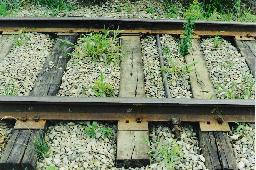
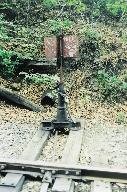
Standard gauge trackwork somewhere in New England. Wood ties
and nails are still used in 1996. You can see a rail anchor in
the third picture, a detail very seldom modelled.

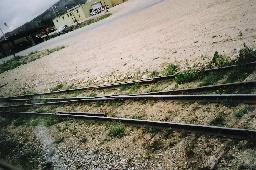
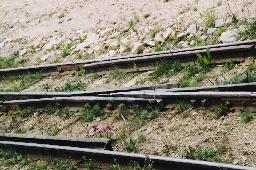
A friend gave me some photos from the 3 foot narrow gauge
railroad White Pass and Yukon Route. Maybe original tracks from
1898.
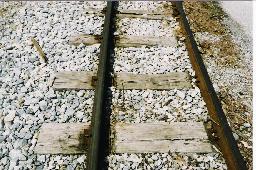
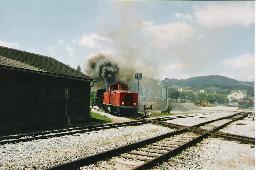
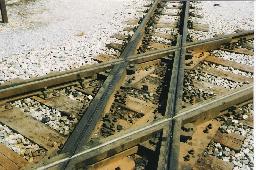
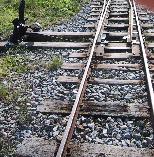
You can see a 76 cm narrow gauge line crossing two standard
gauge tracks in Weiz, Austria. The Switch is in Bikfeld. The
trackwork looks very american for my opinion.
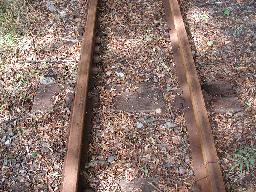
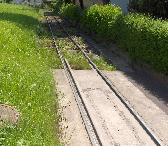
Some industrial 60 cm and 75 cm gauge trackwork in
Switzerland.
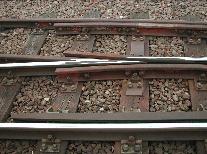
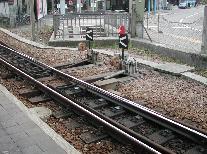
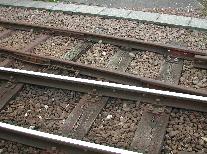
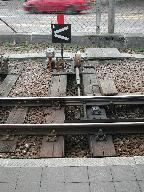
Waldenburger Bahn, the only 75 cm gauge commuter train in
Switzerland (probably in the world).
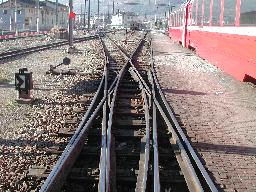
Narrow gauge double slip switch.
RhB Italy/Switzerland.
HOn30 Tracks
Rails
One of the narrow gauge advantages was the use of lighter rails and therefore the lower investment. Lighter rail looks better and is more prototypical. The rails were 33' long til about 1925.
Quotation from Railway Track and Maintenance (1926): For ordinary main-line service, 80 lb. is about the minimum weight and 100 lb. rails are in general use.
80 lb. rail from A.S.C.E: height 5" (HO 1.46 mm), base 5" (HO 1.46 mm), this corresponds in HO to code 55, 100 lb. corresponds in HO to code 70. Early narrow gauge lines used 40 lb. and lighter rail.
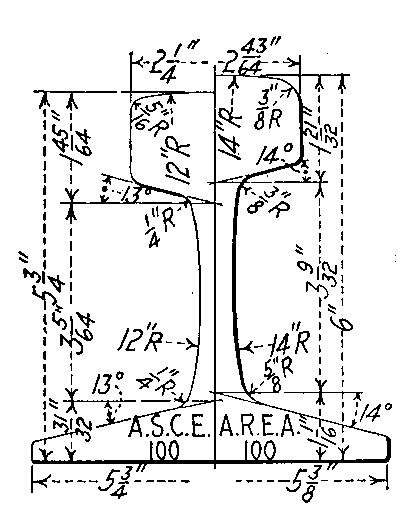
Quotation from Maine Two Footers On2 FAQ:
- SR&RL rail weights, information from 1916, but weights probably did not change too much after then (before that is not a simple answer)
- Farmington - Strong - Phillips weights varied from 50 - 52 - 56 & 58 1/4 lbs (most of it 10.48 mi. was 52lb).
- Phillips to Madrid Jct. 50 lb rail laid in 1919
- Almost everything else was 35 lb rail
- At time of abandonment, there was a reported 2 mi. of 60 lb rail
- B&B Rail was 25 lb, 30ft lengths.
- B&SR Rail Weights
- Bridgton Jct to Bridgton, prior to 1909: 30 & 35 lbs
- Bridgton Jct to Bridgton, after 1909 : 50 lbs.
- Bridgton yard relaid with 50 lbs rail in 1910
A good compromise is to use code 55 rail for HOn30 and code 70 for standard gauge.
Ties
- Standard gauge until 1918: 8' long (HO 28 mm)
- Standard gauge after 1918: 8.5' long (HO 29.8 mm), sometimes 9' (HO 31.5 mm)
- width: 7 .. 9" (HO 2 .. 2.6 mm), thickness: 7 .. 8" (HO 2 .. 2.3 mm)
Ties
PRR practice (standard gauge)
| center-to-center main lines |
22" |
6.4 mm |
| center-to-center sidings |
24.8" |
7.2 mm |
| center-to-center yards |
28.3" |
8.3 mm |
Sächsische Bahnen (Saxonian Railways, Germany), 750 mm gauge
| Width |
200 mm |
2.3 mm |
| Length |
1.7 m |
20 mm |
| center-to-center main lines |
750 mm |
8.6 mm |
| center-to-center sidings |
830 mm |
9.5 mm |
SR&RL
| Width 5" |
1.5 mm) |
| Length 5' |
17.5 mm |
overhang (5-2)/2 = 1 1/2"
Campbell Ties:
1.3 x 2.4 x 28 mm HO standard gauge
1.3 x 2.4 x 21 mm H0n3
They are relative thin, to prevent splitting (nails), less gravel is needed to cover the ground.
Micro Engineering full profile Ties:
1.7 x 2.3 x 23.5 mm HOn3 (37-103)
PCB ties are about 1.6 mm / 1/16" thick)
Fast Track HO narrow gauge PCB crossties:
1.6 x 2.0 x 21 mm (in HOn30 templates)
PCB crossties are 13-1/2 scale feet long by 7 scale inches wide (.080"), and are available in 1/16" and 1/32" thickness.
I cut my ties from a 1.6 x 100 x 160 mm printed circuit board PCB (in Switzerland it is available from Distrelec, Partnumber 450335, for 2.50 CHF that's about $2). I prefer FR-2 PCBs, because the FR-4 (glass/epoxy) makes your sawing blades dull. I saw about 2.3 mm stripes from the PCB with a fretsaw and cut the ties to length (20 mm) with a wire cutting pliers. I choose 8 mm center-to-center distance for my pike.
The Micro Engineering ties have about the same thickness and width and can be used together with my PCB ties. It's enough to insert a PCB tie for about every 4th tie.
FR-2 is composite material made of paper impregnated with a plasticized phenol formaldehyde resin (Synthetic Resin Bonded Paper (SRBP), Bakelite, Lamitex, Paxoline, Pertinax)
FR-4 is a composite of a resin epoxy reinforced with a woven fiberglass mat (epoxy resin bonded glass fabric (ERBGF), Veroboard) printed circuit board (PCB)
Spikes
Cut spikes are about 6" long, the spike head is about 1 9/16" x 1 5/16" in HO is this 1.75 x 0.46 x 0.38 mm. The small spikes from Micro Engineering are 8.0 x 1.7 x 1.0 mm, they are far too large. You can build your own spike from 0.4 mm wire, you have to drill holes into the ties too. That's why I omit the spikes.
--
PeterSchmid - 2011-05-09



 Standard gauge trackwork somewhere in New England. Wood ties
and nails are still used in 1996. You can see a rail anchor in
the third picture, a detail very seldom modelled.
Standard gauge trackwork somewhere in New England. Wood ties
and nails are still used in 1996. You can see a rail anchor in
the third picture, a detail very seldom modelled.


 A friend gave me some photos from the 3 foot narrow gauge
railroad White Pass and Yukon Route. Maybe original tracks from
1898.
A friend gave me some photos from the 3 foot narrow gauge
railroad White Pass and Yukon Route. Maybe original tracks from
1898.



 You can see a 76 cm narrow gauge line crossing two standard
gauge tracks in Weiz, Austria. The Switch is in Bikfeld. The
trackwork looks very american for my opinion.
You can see a 76 cm narrow gauge line crossing two standard
gauge tracks in Weiz, Austria. The Switch is in Bikfeld. The
trackwork looks very american for my opinion.

 Some industrial 60 cm and 75 cm gauge trackwork in
Switzerland.
Some industrial 60 cm and 75 cm gauge trackwork in
Switzerland.



 Waldenburger Bahn, the only 75 cm gauge commuter train in
Switzerland (probably in the world).
Waldenburger Bahn, the only 75 cm gauge commuter train in
Switzerland (probably in the world).
 Narrow gauge double slip switch. RhB Italy/Switzerland.
Narrow gauge double slip switch. RhB Italy/Switzerland.
 Quotation from Maine Two Footers On2 FAQ:
Quotation from Maine Two Footers On2 FAQ:



